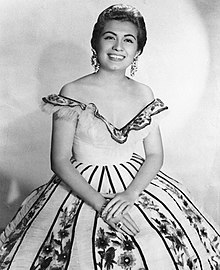Lola Beltrán, whose full name was María Lucila Beltrán Ruiz, was a renowned Mexican singer and actress. She was born on March 7, 1932, in Rosario, Sinaloa, Mexico, and passed away on March 24, 1996. Beltrán is often referred to as “Mexico’s Madonna” or “The Queen of Ranchera Music” due to her immense popularity and influence in Mexican music.
Beltrán began her singing career at a young age, performing in local venues and radio stations. She gained national recognition in the 1950s and 1960s, becoming one of the most prominent figures in ranchera, mariachi, and traditional Mexican music.
Throughout her career, Lola Beltrán recorded numerous albums and singles, many of which became classics in Mexican music. Some of her most famous songs include “Cucurrucucú Paloma,” “Paloma Negra,” “La Cigarra,” and “La Llorona.” Her powerful voice, emotional delivery, and deep connection to Mexican culture made her a beloved figure in the music industry and among audiences worldwide.
In addition to her music career, Beltrán also ventured into acting, appearing in several Mexican films and television shows. She received critical acclaim for her performances, showcasing her versatility as an entertainer.
Lola Beltrán’s legacy continues to be celebrated in Mexican music, and she remains a beloved and influential figure in the country’s cultural history.
